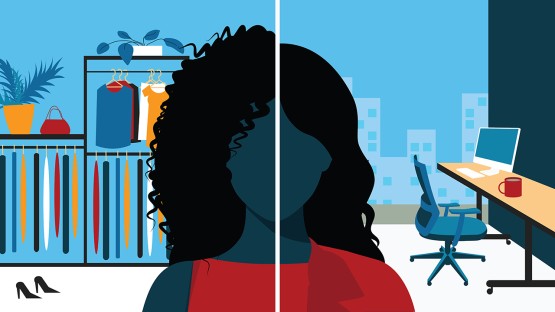
Millennial Black women felt they had autonomy and flexibility in navigating beauty standards in their personal lives, according to a new qualitative study. But at work, they felt compelled to adapt to a more restrictive beauty standard.
“Outside of work, they were more expressive with their hair and makeup styles, which aligned with their generation’s approach to beauty. They also explored how they fashioned themselves in response to existing beauty standards in public places, but were more self-conscious about their appearance in the workplace,” said Jaleesa Reed, author of the study and assistant professor of human centered design in the College of Human Ecology.
“Participants were aware, from personal experience and anecdotes, of repercussions for Black women who did not ascribe to the appearance expectations at work. Eurocentric beauty standards reinforced through popular media also taught them, from an early age, that women with lighter skin tones, and long, straight hair were considered to be more beautiful,” Reed said.
The study, “Millennial Agency and Liberation Within Black American Beauty Standards” appears in the new edited volume “Embodiment and Representations of Beauty.”
Reed, an expert in the processes of self-definition and consumption within Black American beauty culture, interviewed 20 millennial Black American women about their experiences in navigating beauty standards in relation to their identity. The study participants were born between 1981 and 1996, the upper and lower ranges of the millennial generation.
To be American and beautiful is to be “white,” “thin,” “blonde” and “blue-eyed,” the participants said. Though this image reflects ideal beauty representations in popular culture, it is also a standard that the majority of white Americans do not meet, Reed points out. In their personal lives, the study participants embraced an “intracultural” beauty standard – one that reflects the variety of hair textures, body sizes and skin tones present in the African diaspora. The mainstream media has at least superficially incorporated aspects of Black American standards, they said.
But in professional settings, the participants felt they had to make style choices that balanced their identities with achieving their career goals and meeting workplace expectations.
“Decisions around how to style their hair, what jewelry to wear, or how much makeup to put on are tied to their economic livelihood and their ability to support themselves and their families,” Reed said. “On one hand, it feels like, ‘Oh, it’s just how you do your hair.’ But on the other hand, they must also consider their workplace environment, which led them to question their style choices.”
Angelique, a multiracial study participant and a young professional, examined her work appearance and behavior before and during work by asking herself: “Am I coming off too aggressive? Am I using my hands too much? Is my hair looking professional? Can I wear braids? Can I wear my hoop earrings to work or is that going to look too urban for them?”
The study participants were aware that choosing to follow an intracultural beauty standard in a predominantly white environment could result in the loss of a job and a source of financial support for their family, Reed wrote. “… Due to the potential loss of a career opportunity, millennial Black women cannot afford to ignore mainstream beauty standards.”
“For Black women,” Reed wrote, “hairstyle choices for professional spaces are laden with cultural meaning and likely to be misinterpreted. Protective styles, such as cornrows, twists or locs … are often deemed unprofessional as evidenced by the cases of hair discrimination … .”
Black women are 1.5 times more likely than other women in the U.S. to be sent home from work due to their hairstyle, leading to social and economic impacts on their lives, according to the 2019 C.R.O.W.N. Research Study. And Black women with straighter hair are less likely to experience microaggressions in the workplace compared to Black women with coils or textured hair, according to the C.R.O.W.N. study and other studies.
In addition to workplace expectations, the beauty industrial complex compels people, especially women, to participate in these standards, Reed said. “The beauty industrial complex profits from insecurity,” she said. “There’s a reason why you would be made to feel, ‘Oh, maybe I could be thinner, or my hair could be longer, or my skin could be lighter.’ And, magically, here’s a product to fix that for you,” she said.
In contrast, if people can recognize that’s how the beauty industrial complex operates, they can choose to define themselves on their own terms. “Within the framework of Black feminist thought, millennial Black women have to first raise their consciousness and realize that the beauty industry profits from promoting an imagined deficit which can be fixed by buying a product to make you appear closer to the beauty standard of the time,” Reed said. “From there, individuals can determine for themselves, ‘Well, do I really want my skin to be lighter, or do I want my hair to be straighter or longer? And then from there, decide how much they want to engage with the beauty industry.”
In some instances, beauty culture’s association with self-care can offer others a respite from the inability to meet a beauty standard that was not constructed for or by them, she said.
“Recognizing the range of beauty standards across cultures around the world can also offer a path towards stepping outside of restrictive beauty norms,” Reed said.
This post was originally published on this site be sure to check out more of their content.








